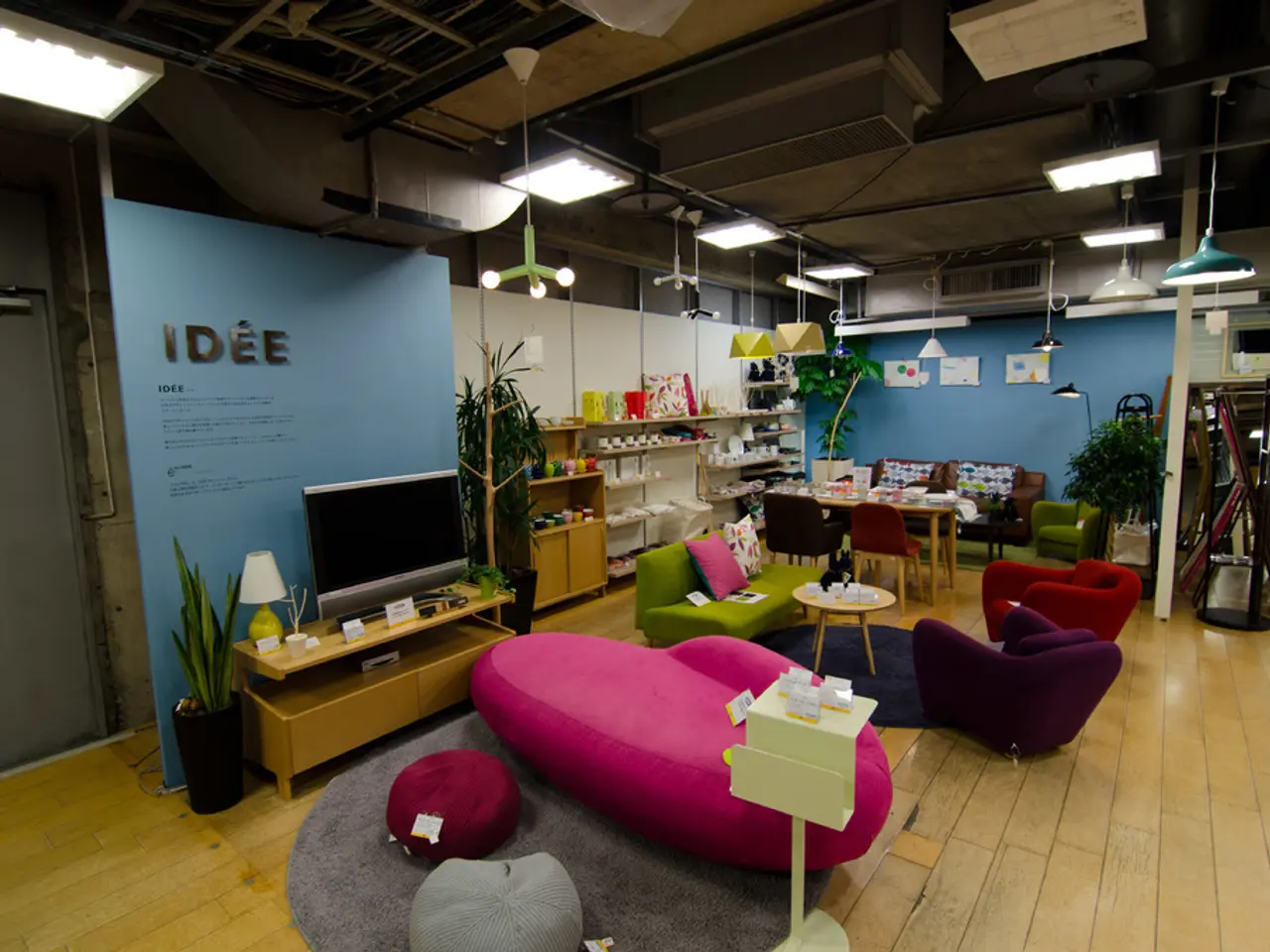Crafting Residences for Harmonious Family Living
In today's world, the concept of multi-generational homes is experiencing a resurgence, with a modern twist. These homes, designed with functional and inclusive living in mind, are becoming a popular choice for families spanning various age groups.
The key principles guiding this new wave of multi-generational home design revolve around flexibility, accessibility, privacy, and sustainability. By balancing shared and private spaces, these homes aim to support diverse needs across generations.
One of the fundamental aspects of these designs is zoned layouts for comfort and privacy. Separate functional zones, such as living areas, sleeping quarters, kitchens, and bathrooms, offer privacy and independence for all generations. For instance, in multi-generational basements, this includes soundproofed bedrooms, private cooking spaces, and step-free showers.
Universal design elements are also integral to these homes. Wider doors and hallways, lever-style handles, slip-resistant flooring, and good lighting ensure safety and ease of movement for seniors and young children alike.
Flexible and adaptable spaces are another essential feature. Open floor plans and built-in multifunctional furniture allow spaces to quickly shift functions—from guest room to hobby space to office—to accommodate changing family needs over time.
Smart and sustainable technologies are also prioritized. Automated lighting, climate control, and acoustic zoning enhance comfort and efficiency. Sustainable construction materials and energy-efficient designs are used to future-proof the home.
Natural light and connection to the outdoors are also crucial. Maximizing natural light through strategic window placement and maintaining visual and physical connections with nature supports wellbeing and creates inviting communal areas.
Ample storage with minimal clutter is another important aspect. Built-in cabinetry, under-stair storage, and multipurpose furniture keep spaces organized and spacious without detracting from aesthetics.
Private cooking and laundry facilities are included to provide each generation autonomy while sharing the home. Separate or well-equipped kitchenettes and laundry areas ensure everyone has their own space.
Outdoor access is another key feature, enriching family bonding experiences. Outdoor play zones can promote an atmosphere of joy and connection, while outdoor community gardens can foster creativity and collaboration among family members.
Safety is paramount, especially for elderly relatives. Home monitoring sensors can provide peace of mind, ensuring the comfort and safety of all residents.
Integrating technology is beneficial for creating inviting spaces where sharing stories, dreams, and mutual support becomes part of the daily rhythm. Shared entertainment experiences, such as integrated home theaters or streaming services, can bring families closer together.
Al fresco dining can create cherished family traditions and lasting memories. Multi-use areas, such as furniture that can serve multiple purposes, add versatility to these homes.
Economically, merging resources to create a united living space can significantly alleviate financial pressures. This living arrangement, rooted in love, shared experiences, and unwavering support, nurtures tight-knit family relationships, offers emotional support, and strengthens resilience through life's challenges.
In conclusion, modern multi-generational homes are a testament to the power of design in fostering connection, promoting wellbeing, and creating spaces that truly cater to diverse family needs.
- These modern multi-generational homes employ zoned layouts for comfort and privacy, featuring separate functional zones like living areas, sleeping quarters, kitchens, and bathrooms.
- The integration of universal design elements, such as wider doors and hallways, lever-style handles, slip-resistant flooring, and good lighting, ensures safety and ease of movement for senior and young family members.
- Smart and sustainable technologies, such as automated lighting, climate control, and acoustic zoning, are prioritized to enhance comfort, efficiency, and the future-proofing of the home.
- Natural light and connections to the outdoors are crucial in these homes, creating inviting communal areas that support wellbeing and family bonding.
- Amenities like private cooking and laundry facilities provide each generation with autonomy while sharing the home, fostering a sense of independence.
- Integrating technology can benefit these homes by creating welcoming spaces where sharing stories, dreams, and mutual support become part of the daily routine, further nurturing tight-knit family relationships.




